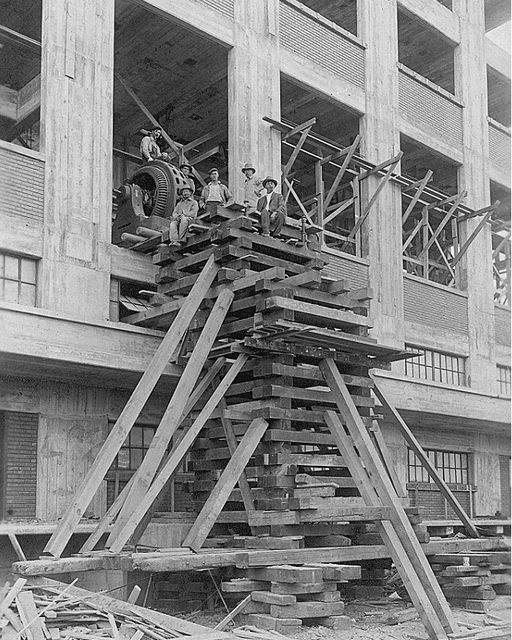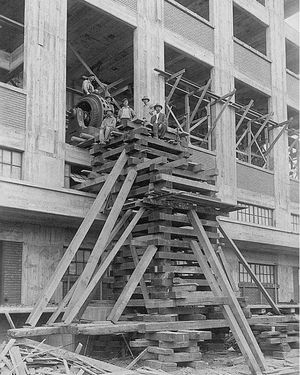Salina was a bustling city in the early 20th century, who owed much of its economic strength to the milling industry. The heart of this economic engine was powered by a network of mills strategically positioned along the railway tracks on Santa Fe. One such mill that played a pivotal role was the renowned Weber Flour Mill. Captured in a historic photograph from around 1919, this image vividly portrays the installation process of a mighty 350-horsepower electric turbine at the mill.
The impressive electric turbine, weighing a staggering 30 tons, stands as a testament to the advancements of the era. Its introduction marked a significant turning point, elevating the mill's production capacity from 1,200 barrels per day to an impressive 1,500 barrels. This pivotal upgrade was a driving force behind the mill's reputation, notably for producing the esteemed Tea Table flour.
As time progressed, the mill's destiny took a new turn. Ownership shifted hands, eventually falling into the capable stewardship of J.J. Vanier. However, challenges arose on the horizon. In 1945, a devastating fire swept through the mill's structure, inflicting substantial damage. Despite efforts to recover, the mill's operations eventually came to a halt in 1964, marking the end of an era.
Preserved within the Museum's Collection, the c1919 photograph immortalizes a bygone era of industriousness and innovation. It serves as a reminder of Salina's rich history, where milling stood tall as the backbone of the city's flourishing economy.



